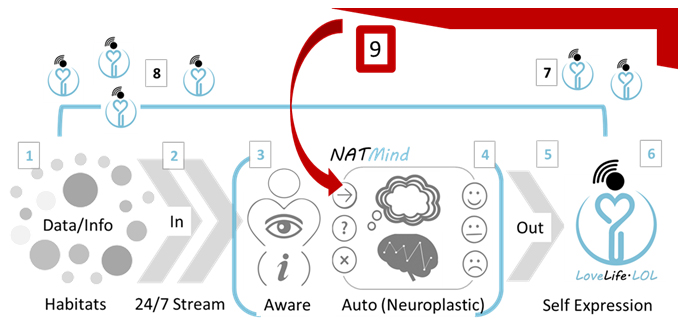Articles
To whet your appetite and convince you to share your email and interests here are the first few articles:
Article 1:
A new paradigm brings new understanding: the components of anomalous perception Objective: Since the experience is so difficult to describe, I compare it to the ordinary experience of you talking to a friend to the ‘hearing voices experience’ to make it easier for you to relate to the experience and to break it down into logical components based on how the mind functions.
Summary: For you, talking to a friend is a safe, happy, predictable experience with most of the data/info processing happening automatically and so quickly you don’t even notice it – you simply enjoy! For a voice hearer, fixed values become variables, there are gaps in the info and it arrives in a confusing and most often threatening way that engages threat systems our mind/body won’t let us ignore. An ‘other world’ with strange qualities demands to be understood. Making sense of it leads to ‘unusual beliefs’ that confuse our thought flow.
Article 2:
The Phenomenology of Anomalous Perception Objective: To show that we can build a breakthrough model for sharing and integrating research on the topic. The phenomenology is the focus of much research since it is the ‘origin’ of the experience – the anomalous input. These studies offer the opportunity to make great strides in our understanding. Clarity in how we experience it, the boundaries between input | perception | belief | experience are critical to making sense of it.
Summary: The anomalous nature of the input keeps it in the aware mind. Varieties of input maintain a level of surprise that ensure we pay attention to it. The various modalities logically lead to different types of unusual belief. The big research opportunity lies in recognizing the factors common to all anomalous inputs – the mechanism by which they arrive without the traceability or provenance that we usually have with our environmental inputs.
Article 3:
Incredible Mind, MAD beliefs, MAD Experience – the good, the bad and the ugly Objective: To show that the experience is a result of our natural mind processes being engaged by an unusual input that mimics significance in our lives. Our mind naturally synthesizes a perception and tries to make sense of it in the context of our everyday world, a process which fails at many identifiable points.
Summary: Evolutionary principles show that our mind seeks to reliably project happy experiences – we choose from a variety of options we are able to engineer. We acclimatize to a certain level of poor environments/experiences. The mad experience is best explained as a natural mind response to unusual inputs that we seek to explain in ordinary real life contexts – the failure to find congruence with expectations/beliefs about self and context can be used to explain the ‘symptomatic’ behaviors we observe and the difficulty in changing them.
Please sign up to be informed on progress in adding content to the subscription service. We expect annual subscription rates to be comparable to a few articles from any of the research article aggregation and distribution sites – and presented in a more fun and practical way.

 is about offering you insights that will make you more successful in your work towards unravelling madness – as a voice hearer, carer, family member or friend, researcher, policy maker, educator, therapist, applied scientist, communicator, journalist, activist or curious citizen of the world.
is about offering you insights that will make you more successful in your work towards unravelling madness – as a voice hearer, carer, family member or friend, researcher, policy maker, educator, therapist, applied scientist, communicator, journalist, activist or curious citizen of the world. 






